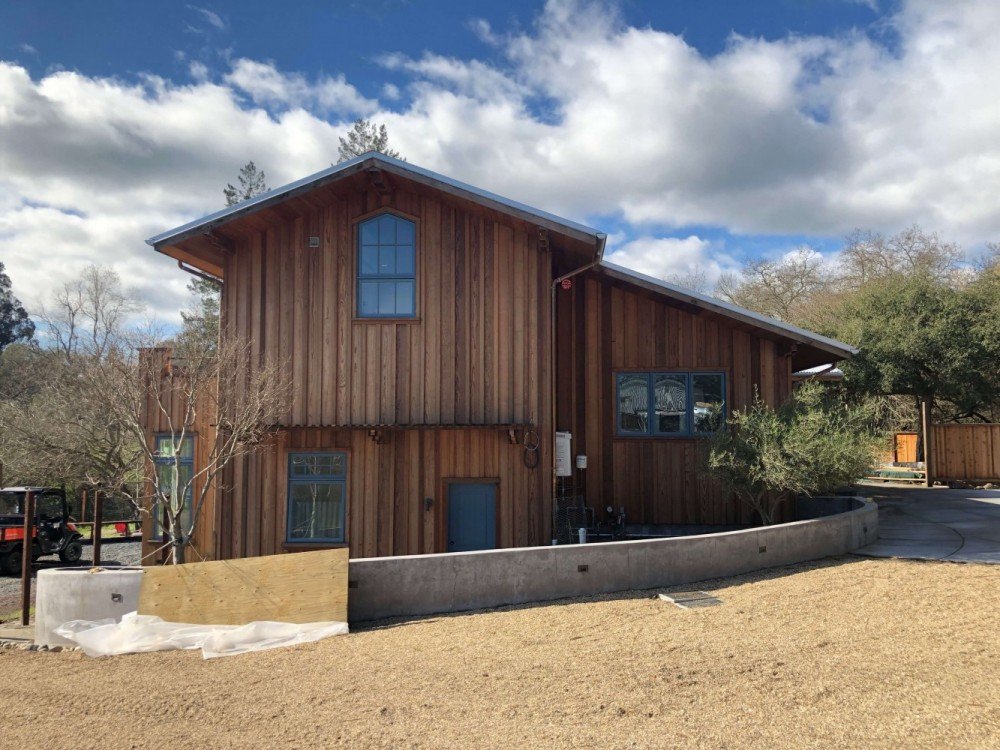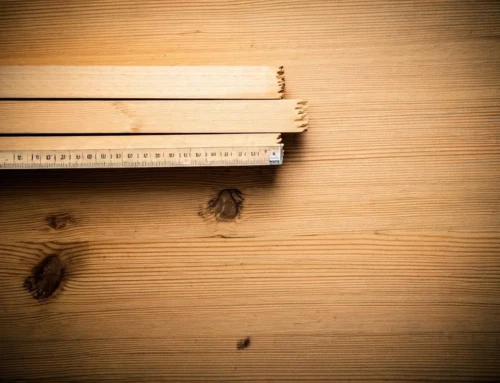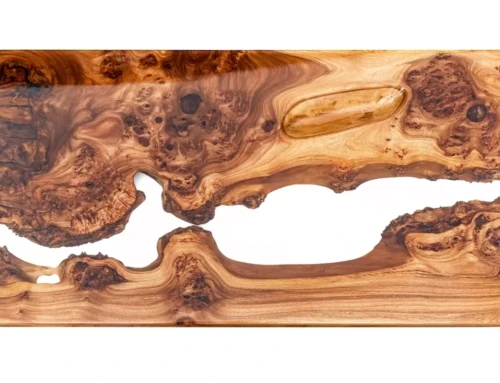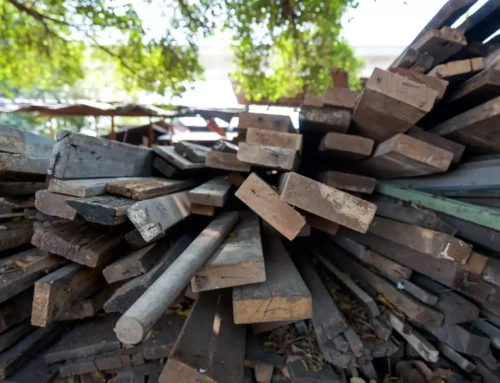Introduction to Decking and Siding Materials
For us here at The Lumber Baron, choosing wood over plastic vinyl and cement products is a no brainer. We realize when it comes to choosing materials for your home’s exterior, you’ve got options. A lot of them. Wood, plastic, vinyl, and cement each bring something to the table. But what’s the deal with each? Let’s break it down, simple and straight. Wood, is the classic choice. It brings warmth and a natural vibe that the others can’t possibly begin to match. For the most part, they have a shelf life of 30-40 years. In an effort to produce longer lasting materials, products like plastic and vinyl began hitting the market. They are suppose to be easy care for but they can feel a bit, well, plastic. And cement? It’s tough as nails but can come off cold and, frankly, a bit industrial. Each choice has its perks and drawbacks, but if you’re shooting for that combo of beauty, warmth, and a timeless look, wood’s your best bet. Plus, it’s got a charm that the others are still trying to copy. So, if you’re eyeing decking, siding or fencing and want that cozy, inviting feel, wood’s the way to go.

All Heart Redwood Siding
The Environmental Impact of Wood vs. Plastic, Vinyl, and Cement
Choosing wood for your decking or siding doesn’t just add a natural charm to your home but also has a significantly lower environmental footprint compared to alternatives like plastic, vinyl, and cement. Wood is a renewable resource; trees can be replanted and grown again, making it a sustainably smart choice. On the flip side, plastic and vinyl are products of the petroleum industry, requiring a hefty amount of fossil fuels for their production. Not only does this contribute to depletion of non-renewable resources, but it also results in higher emissions of greenhouse gases. Then there’s cement, a major player in global carbon emissions due to the intense energy required to produce it.
In addition to production concerns, at the end of their lifecycle, wood products are biodegradable. This means they can break down and return to nature without leaving harmful residues. Plastic and vinyl, however, can linger in the environment for centuries, posing threats to wildlife and ecosystems. Furthermore, wood’s natural ability to sequester carbon—a process where trees absorb CO2 from the atmosphere—further bolsters its green credentials. Opting for wood not only benefits your immediate surroundings by lending them a timeless appeal but also casts a vote for a healthier planet.
Durability and Longevity: Wood’s Natural Advantage
Wood stands up to the test of time, not just in terms of style, but also when it comes to durability and longevity. Unlike plastic, vinyl, or cement, which can fade, crack, or degrade under the elements, wood possesses a natural resilience. It can endure harsh weather, from scorching sun to pouring rain, when using types like cedar, redwood or mahogany known for their resistance to rot and pests. Over time, while synthetic materials may show age and wear, wood maintains its structural integrity and can even gain character, looking better as years pass. This isn’t just talk; many wooden structures and sidings have gracefully stood for decades, proof of wood’s natural advantage in lasting through the years. Take a look at one of our many reclaimed lumber options just waiting to serve another long life in their next project. In short, when you choose wood, you’re investing in durability and longevity that synthetic alternatives can’t match.
Aesthetic Appeal: The Timeless Look of Wood
Wood stands out because it has a natural beauty that plastic, vinyl, and cement can’t match. When you use wood for decking or siding, you bring a warmth and classic elegance to your home that feels inviting. Unlike synthetic materials, wood blends seamlessly with outdoor surroundings, creating a cozy and harmonious look. Plus, wood’s appearance improves with age, gaining a distinguished character that materials like plastic or vinyl can’t replicate. This timeless appeal of wood makes your home stand out and can even increase its value. In a world where everything feels mass-produced, choosing wood offers a touch of uniqueness and connection to nature.
Maintenance and Care: Comparing the Effort
Wood demands a bit more elbow grease than plastic, vinyl, or cement. You’ll need to stain or seal it every couple of years to keep it looking good and protect it from the weather. Despite that, fixing a wooden deck or siding is simpler. If a board gets damaged, you swap it out, no sweat. With materials like plastic or vinyl, you might need to replace a whole section if it gets badly damaged, hitting your wallet hard. Cement siding is tough but crack it, and you’re looking at a tricky repair job. In short, wood’s maintenance might be more frequent, but it’s usually easier and cheaper to deal with when things go south.
Cost Comparison: Initial Investment vs. Long-Term Value
When it comes to decking or siding your house, the price tag is a big deal. So, let’s talk numbers. Initially, wood might seem more expensive than plastic, vinyl, or cement options. But, don’t let that first cost steer you wrong. Think long haul. Over time, wood wins in the value department. Why? It boils down to maintenance and lifespan.
Yes, plastic and vinyl boast low maintenance, but if they get damaged, fixing them is neither easy nor cheap. And while cement sides are tough, they can be pricey to install and not so kind on the wallet if repairs are needed. Wood, on the other hand, is easier and more cost-effective to fix. Plus, with regular care, wood can last decades, outliving its initial costs and adding a warm, natural beauty that only gets better with age.
And there’s more. Wood can actually save you cash in ways you might not expect. It’s a natural insulator, keeping your place cooler in summer and warmer in winter. This can help cut down your energy bills, adding to the long-term savings.
So, when choosing between wood, plastic, vinyl, or cement for your decking or siding, think past the upfront cost. Consider maintenance, repair, and energy savings. Over time, wood not only adds unmatched natural beauty to your home but can also be kinder to your finances in the long run.
Wood’s Insulating Properties and Energy Efficiency
Wood stands out for its natural insulating properties and energy efficiency, making it a superior choice for decking or siding over plastic, vinyl, and cement. Unlike its counterparts, wood naturally helps keep your space warmer in winter and cooler in summer. This means you can save a decent chunk of money on heating and cooling bills. Plus, wood’s ability to absorb and retain heat far surpasses that of plastic, vinyl, or cement, which have a tendency to transfer cold and heat more directly, leading to higher energy use. So, besides adding a warm, natural look to your home, wood actively contributes to a more energy-efficient living environment. In a world where energy costs are only going up, choosing wood for your decking or siding could be a smart long-term investment.
Safety and Comfort: Wood’s Natural Benefits
Wood offers unique advantages when it comes to safety and comfort, making it a superior choice over plastic, vinyl, and cement for decking or siding. First off, wood is naturally anti-slip. This makes wooden decks safer to walk on, especially when wet, reducing the risk of slips and falls. In terms of comfort, wood does not absorb heat the same way materials like plastic or cement do. This means that during hot weather, wooden decks and sidings stay cooler, providing a more comfortable environment. Additionally, wood has natural insulating properties, keeping your home warmer in the winter and cooler in the summer. This insulation also means wood can help reduce noise pollution, making your living space quieter. Unlike plastic or vinyl, wood does not emit harmful chemicals under the sun, ensuring a healthier environment for you and your family. Lastly, wood’s natural texture and warmth create a welcoming and relaxing atmosphere, enhancing the overall comfort and aesthetic appeal of your home. In sum, wood’s safety features and comfort-enhancing properties make it a smart choice for your decking or siding needs.
Impact on Home Value: Wood vs. Synthetic Materials
Choosing wood for your decking or siding isn’t just about the environment or aesthetics; it’s a smart investment in your home’s value. When compared to plastic, vinyl, or cement options, wood stands out for adding warmth and natural beauty that can’t be easily replicated. This isn’t just us talking; real estate experts agree that homes with wood exteriors or decks tend to sell faster and for higher prices. It’s simple – wood has a timeless appeal that synthetic materials struggle to match. Whether it’s cedar, redwood, or pine, wood not only makes your home look better but also boosts its market value. So, when you’re deciding on materials, remember: wood isn’t just the right choice for today; it’s an investment in your home’s future value.
Conclusion: Why Wood is the Superior Choice for Decking and Siding
Choosing wood over plastic, vinyl, and cement products is an easy decision for many reasons. Wood stands out as the superior choice for decking and siding for several reasons. First off, wood brings a natural beauty and warmth that synthetic materials can’t match. Its unique grains and textures add character and a cozy feel to any outdoor or indoor space. Unlike plastic, vinyl, or cement, wood can easily be painted or stained to match any style or preference, offering unparalleled aesthetic flexibility.
Moreover, wood’s environmental footprint is significantly lower. It’s a renewable resource that, when sourced sustainably, can be replaced much more quickly than it takes for plastic to decompose or cement to be produced. This makes wood a more environmentally friendly option. Plus, wood has natural insulating properties, which can help in reducing energy costs by keeping your home warmer in winter and cooler in summer.
Durability is another area where wood shines. When properly maintained, wood decking and siding can last for decades, proving to be a wise investment over time. Unlike vinyl that can crack under extreme temperatures or cement that can chip, high-quality wood can withstand the elements with just a bit of care.
Lastly, wood adds value to your home. Its timeless appeal and durability make it an attractive feature for potential buyers down the line. This isn’t always the case with synthetic materials, which can look outdated as design trends change.
In conclusion, while the initial cost might sometimes be higher, wood’s beauty, environmental benefits, durability, and the value it adds to a home make it the superior choice for decking and siding over plastic, vinyl, and cement.






